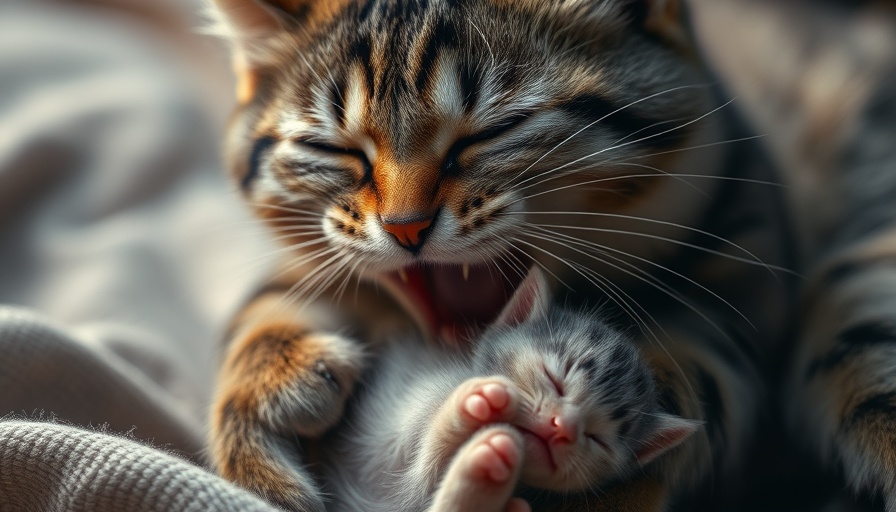
Understanding the Complexities of Feline Dystocia
Dystocia, or difficult labor, is a significant concern in feline medicine, affecting between 3% and 8% of purebred cats, with uncertain rates in mixed-breed populations. In these cases, both queens and their kittens often face serious risks, as the mortality rate for kittens is markedly higher compared to natural births. Despite the prevalence of this issue, there remains a gap in effective management strategies for veterinarians, many of whom rely on canine medical guidelines due to the limited knowledge around feline dystocia.
Recent Research Enhancing Our Knowledge Base
A recent study published in Acta Veterinaria Scandinavica sheds light on feline dystocia by diving into 111 cases treated at a Swedish animal hospital between 2017 and 2024. The results confirm a high kitten mortality rate, primarily due to complications encountered early in the birth process, while queen survival rates remain stable. Most of the cases were maternal in origin, with uterine inertia as the primary cause. This highlights the need for early diagnosis and intervention to improve outcomes for kittens.
Implications for Veterinary Practice
For veterinary practices, understanding these dynamics is crucial. Maternal stress, indicated by hyperglycemia, has been linked to increased kitten mortality rates. Interestingly, treatments involving calcium supplementation and oxytocin have shown promise, even in normocalcemic queens, highlighting the potential for innovative non-surgical solutions even when traditional methods yield low success rates.
Future Directions in Feline Reproductive Health
Given the limitations of currently available data, particularly around breed-related risk factors for dystocia, there is an urgent need for more comprehensive studies. As more clinics begin to recognize and address these issues, practices stand to enhance their service offerings, improve client satisfaction, and ultimately boost their profitability.
With the continued emphasis on evidence-based medicine, integrating the latest research into veterinary practice not only supports better health outcomes for feline patients but also strengthens the reputation and effectiveness of veterinary clinics.
 Add Row
Add Row  Add
Add 

 Add Row
Add Row  Add Element
Add Element 




Write A Comment